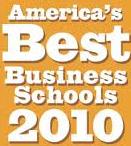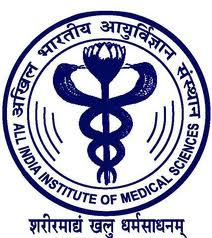Archive for October 21st, 2011
MBA Admissions: Queues at top US B-schools turn shorter
 The gangbuster growth of business school applications during the recession appears to be a thing of the past for two-year full-time MBA programs. This year, application volume was down at 21 of the top 30 full-time MBA programs, according to data collected by Bloomberg Businessweek. The decline in applications is a trend that appears to be accelerating, with eight additional schools reporting declines in application volume this year over 2010.
The gangbuster growth of business school applications during the recession appears to be a thing of the past for two-year full-time MBA programs. This year, application volume was down at 21 of the top 30 full-time MBA programs, according to data collected by Bloomberg Businessweek. The decline in applications is a trend that appears to be accelerating, with eight additional schools reporting declines in application volume this year over 2010.
Applications were down at seven of the top 10 business schools, including the University of Chicago’s Booth School of Business, Harvard Business School, and Northwestern University’s Kellogg School of Management.
Stanford saw the biggest dip in application volume of the top 10 schools, with 586 fewer applications this year, an 8 per cent decline from 2010. Still, some of the top 30 schools managed to buck the downward trend. Dartmouth University’s Tuck School of Business, University of Michigan’s Ross School of Business and University of California, Los Angeles’ Anderson School of Management, reported substantial increases in applications, with each school receiving more than 200 applications over last year’s total.
The downward spiral in application volume at the top 30 schools is mirrored in the business school world at large: 67 per cent of two-year full-time MBA programs surveyed by the Graduate Management Admission Counil (GMAC) reported a decrease in applications this year, up from 47 per cent in 2010. A skittish economy, coupled with candidates unwilling to leave their jobs, may be causing some to hold off applying to business school, GMAC noted in its latest survey of application trends. “The impact of economic uncertainty on admissions trends for full-time MBA programs may still be underway,” GMAC said in the report.
The smaller pipeline of MBA applications this year meant that getting into some of the top business schools has become easier. Two-thirds of the top 30 business schools admitted a larger percentage of applicants this year, up from one-third the year before. The University of Minnesota’s Carlson School of Management had the biggest slip in selectivity of the top 30 schools, admitting nearly 41 per cent of students, up from 30 per cent in 2010. More typical were the University of Southern California’s Marshall School of Business and Brigham Young University’s Marriott School of Management, both of which saw selectivity slip five percentage points. Even Stanford, the most selective of the top 30 business schools, became slightly easier to get into, accepting 7 per cent of all applicants, up one percentage point from 2010.
Source: The Economic Times (Courtesy – Bloomberg Businessweek), October 21, 2011
AIIMS doctors overworked, no research
 Hamstrung by an acute staff shortage and increasing overload of patients, at least one-third of the faculty members at the All India Institute of Medical Sciences (AIIMS) are compelled to work even on Sundays and other holidays. The first-of-its-kind study, which looked at how doctors on an average spend their time, has thrown up interesting findings.
Hamstrung by an acute staff shortage and increasing overload of patients, at least one-third of the faculty members at the All India Institute of Medical Sciences (AIIMS) are compelled to work even on Sundays and other holidays. The first-of-its-kind study, which looked at how doctors on an average spend their time, has thrown up interesting findings.
With three in four faculty members feeling that the official working hours are inadequate for finishing their routine work, the study conducted by the institute’s department of hospital administration found that on an average, a member works for 55 hours and 47 minutes far in excess of official working hours of 42 hours and 30 minutes in a week. In absolute numbers, it works out to 13 hours 27 minutes or 31.2% excess time.
Surgery and allied speciality faculty members spend more than 50% excess time as compared to their peers in medicine, who spend almost 38% of extra time. Para-clinical and clinical departments’ faculty members spend 16% and 26% extra time, respectively. All of them have to report to work before time, stay beyond the working hours, work on off days like Sundays and other holidays.
The study, conducted by Dr Shakti Kumar Gupta (HOD, hospital administration) and Dr U S Garg, found that faculty members on an average spent most of their time seeing patients. Consequently, teaching or pursuing research took a beating. Around 26.2% of the time of an average faculty member was spent on teaching, research (25.2%), patient care (31.2%) and administrative work (17.1%). The faculty, on an average, availed just 32.5 days of vacation in a year against the authorized annual leave of 74 days.
More than 60% of the faculty members reported coming to work before the start of official working hours every day varying between one and two hours. Similarly, more than half of them stayed beyond the official working hours every day up to at least two hours. “Most of the departments in AIIMS are grossly understaffed. Though 629 faculty positions are authorized at AIIMS, only 434 are filled – a deficiency of more than 30%,” the study said.
Three-fourth of the faculty members interviewed felt that their department was understaffed. About 90% of the faculty disagrees that AIIMS has adequate strength. Faculty members told TOI that one of the main reasons for doctors finding no time for research or to socialize is due to tremendous patient load. Nearly 10,000 patients a day attend OPDs alone. Around 94.6% of the faculty said they have not undergone any formal induction training programme on joining AIIMS as a faculty member.
“Faculty in pre-clinical departments spent an average of 26.1% extra time over and above their official working hours in the institute. Faculty in para clinical departments spent an average of 16.7% extra time and spent just 26% time on research-related activities. Faculty in clinical departments spent an average of 38.2% extra time over and above their official working hours with 21.3% time on research related activities and 39.84% time on patient care related activity,” the study said.
Male faculty members spent an average of 38.6% extra time over and above their official working hours for the purpose of teaching, research, patient care and institute-related activities. Female faculty members, on the other hand, spent an average of 14.1% extra time.
An AIIMS faculty member said, “We sacrifice our personal time for the good of the nation. AIIMS is a tertiary care referral institute par excellence providing the best in terms of education, research and patient care in the country. The proportion of time the faculty spends plays a major role in determining the quality of research, education and patient care.”
Source: The Times of India, October 21, 2011